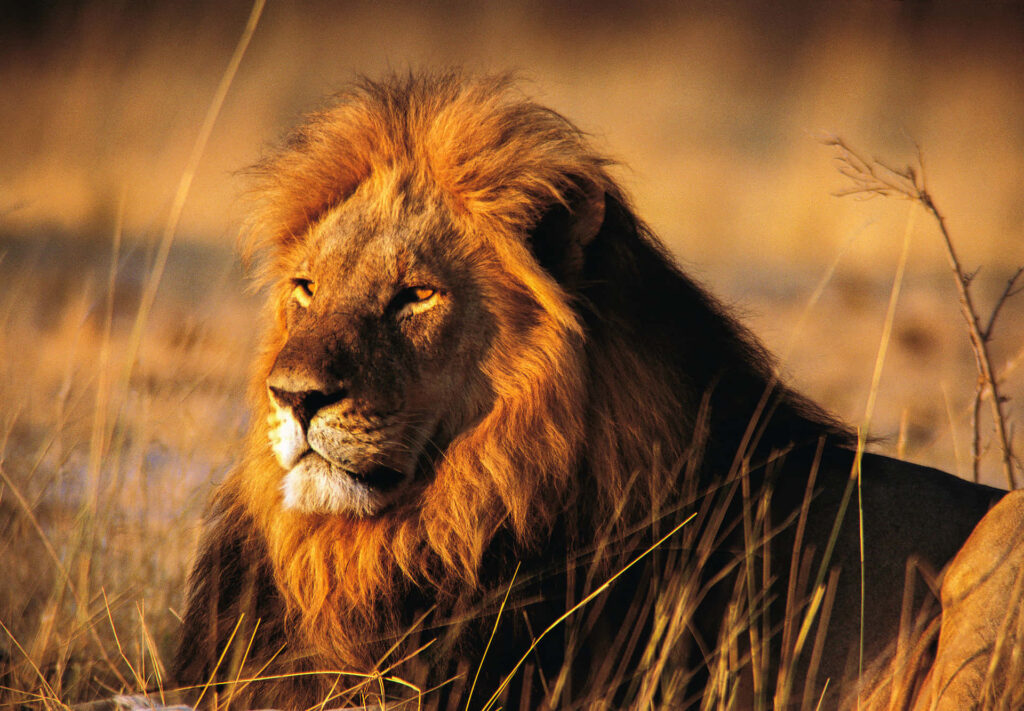The lion (Panthera leo) is one of the most iconic and powerful animals in the world. Known for their strength, social structure, and majestic appearance, lions are often referred to as the “King of the Jungle” (though they actually live in savannas, grasslands, and open woodlands, not jungles).
Key Facts About Lions:
- Scientific Name: Panthera leo
- Habitat: Lions are found mainly in sub-Saharan Africa, though there is a small population of Asiatic lions in the Gir Forest of India.
- Physical Features:
- Males have a distinctive mane, which makes them easily recognizable. This mane is thought to be a sign of strength and maturity.
- Females do not have a mane and are generally smaller than males.
- Size:
- Males typically weigh between 330 to 550 pounds (150 to 250 kg).
- Females are slightly smaller, weighing around 260 to 400 pounds (120 to 180 kg).
- Diet: Lions are carnivores and hunt in groups, primarily preying on large herbivores like zebras, wildebeests, and buffalo.
- Social Structure: Unlike other big cats that are solitary, lions are social animals. They live in groups called prides, which consist of related females, their cubs, and a few males.
- Life Span: In the wild, lions can live around 10 to 14 years. In captivity, they may live longer, up to 20 years.
- Conservation Status: Lions are currently listed as Vulnerable by the International Union for Conservation of Nature (IUCN), with populations declining due to habitat loss, human-wildlife conflict, and poaching.
Interesting Facts:
- Roar: Lions have one of the most powerful roars among land animals, which can be heard from up to 5 miles away.
- Hunting: In a pride, females usually do most of the hunting, while the males protect the pride from intruders and rival lions.
- Mane Significance: A male lion’s mane serves not only as a visual indicator of his strength and status but also as protection during fights with rival males.
Lions have a rich cultural significance and have been symbols of power, courage, and royalty across many cultures and civilizations, appearing in mythologies, emblems, and national symbols.



